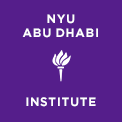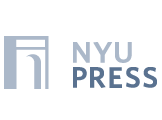Manchester City and al-Mayidi ibn Zahir: The power and prestige of Emirati poetry and sport

Soccer ball by jarmoluk. CC0 via Pixabay.
In this blog post, PhD student Rhiannon Garth Jones explores the construction of a national identity and projection of power in the United Arab Emirates by comparing Emirati poetry traditions with the UAE’s involvement in elite international sport. She uses the poem “Intelligent Speech and Borders of the Land” by al-Mayidi ibn Zahir and the Manchester City soccer team to argue that both poetry and sport are languages to project identity and power that are grounded in millennia-long traditions.
Imagine a rich person, eager for prestige. They spend their money to attract the best talent to their city. They flaunt their facilities, brandish their wealth, and make grand claims about the future of their project. A contest is declared; fans and commentators flock to see for themselves. The buzz of excitement builds up, a hush of anticipation signals the start, well-rehearsed jibes fly against the opposition, roars greet a successful shot, the crowd basks in the satisfaction of a victory well-fought and bragging rights secured. Legends are created, embellished, and handed down by word of mouth. Time passes and fortunes change, but the locals remember the glory days.
What Culinary History Can Teach Us: Tracing Dishes Through the Library of Arabic Literature

In this blog post, Leonie Rau writes about what premodern Arab recipes reveal about the cultures and societies they originate from.
The study of premodern Arabic cookbooks has, happily, received a fair share of attention this past decade, with more and more texts made accessible to scholars and the interested public through new editions and translations, such as that of the 13th-century Syrian cookbook Scents and Flavors. Evolved from “the personal recipe collections that had been fashionable for gentlemen of the pre-Islamic Persian court to keep,” such cookbooks reflect the culinary tastes and trends of their times and predate the first extant European recipe collections by several centuries, as translator Charles Perry explains in his introduction.
These cookbooks lend themselves brilliantly to teaching the premodern Arab world, as they offer multiple angles of engagement. (more…)
An Act of Shared Solitude: Reading The Book of Travels Together on #BookTwitter
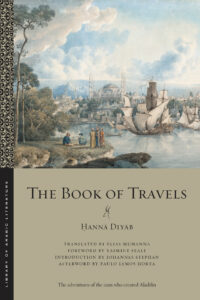 In this post, Reem Adnan Khayyal introduces us to the #BookTwitter community and describes her experience leading an online group read of Hanna Diyab’s The Book of Travels.
In this post, Reem Adnan Khayyal introduces us to the #BookTwitter community and describes her experience leading an online group read of Hanna Diyab’s The Book of Travels.
On December 1st, we started #Diyab22, in which readers from all around the world were invited to read Hanna Diyab’s The Book of Travels as our #booktwitter read for the month of December, with readers sharing their favorite quotes, thoughts, comments, questions and trivia using the hashtag #Diyab22.
Taking part in online group reads, we have learned to read differently. In an attempt to alternate between the Western canon and Eastern corpus of literature, the translations of the Library of Arabic Literature have played an integral part. If East and West are to complement each other, the East is best experienced by reading the LAL blue books, which make Arabic literature available to the English-language audience.
Each month, we read one, sometimes two books, while sharing quotes and trivia and generally bonding over the books we read together. Very often, it is a transformative reading experience. (more…)
On Gender and Translation: A Feminist Reading of Consorts of the Caliphs
In this blog post, Professor Leyla Rouhi reads Consorts of the Caliphs and asks what the book can teach us about gender and translation.
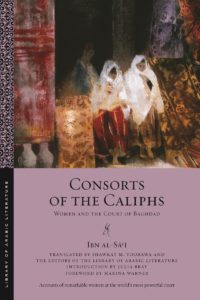 What do the study of gender and translation have in common? There are many answers to this question, but one is that both ask us to think more theoretically, while also requiring specific case studies and contextualization to come into focus. Otherwise, their discussion, however well intentioned, will not go beyond generalities. Consorts of the Caliphs: Women and the Court of Baghdad provides a sound case study for the exploration of specificity in both gender study and translation.
What do the study of gender and translation have in common? There are many answers to this question, but one is that both ask us to think more theoretically, while also requiring specific case studies and contextualization to come into focus. Otherwise, their discussion, however well intentioned, will not go beyond generalities. Consorts of the Caliphs: Women and the Court of Baghdad provides a sound case study for the exploration of specificity in both gender study and translation.
The collection, gathered by the Baghdadi author and compiler Ibn al-Sā‘ī (593-674/1197-1276) is “a work of historical biography [that] gives voice to the spirited, learned, influential women of the medieval past in the Abbasid Empire. It unbinds our ears and eyes to some of what they said and did,” as Marina Warner writes in her foreword. It spans five hundred years and narrates the lives, deeds, and special traits of the concubines and wives of generations of Abbasid caliphs. The anecdotes and biographies showcase the beauty, talents, and admirable traits of the women, free or enslaved. (more…)
Reading Two Arabic Travel Books: A Guide for Beginner Students of Arabic
In this blog post, Adam Bremer-McCollum describes his experience teaching an Arabic reading course at the University of Notre Dame, for which students read selections from Two Arabic Travel Books by Abū Zayd al-Sīrāfī and Ibn Faḍlān. He explains his approach to teaching (and learning) pre-modern Arabic and offers some tips and advice for beginning students.

“Arabic Script” by Nidhi Ranganath. CC BY-SA 4.0 via Wikimedia Commons.
We live in a vast and overwhelming world, and one experience that can feel especially overwhelming is trying to learn a new language. In his book The Doors of Perception, the English writer and philosopher Aldous Huxley famously used the image of a reducing valve to explain how the human brain copes with overwhelming sensory input by selectively ignoring some things. Language learners can also use this concept of a “reducing valve” to help them approach new texts. There’s so much possibility in a written text — how to say it, how parts are connected, what individual and joined words may mean — that readers will benefit from tools to help focus the incoming flood of words, forms, and meanings. For Arabic, aids like thorough vocalization and a glossary reduce the noise of additional possibilities and guide readers to the correct pronunciations and meanings as they read a text. (more…)
A Library “Crammed Floor to Ceiling with Books”: An Interview with Tim Mackintosh-Smith
A Physician on the Nile begins as a description of everyday life in Egypt at the turn of the seventh/thirteenth century, before becoming a harrowing account of famine and pestilence. In this interview about the book, the second of a two-part series (read the first part here), translator Tim Mackintosh-Smith sits down with A. J. Naddaff to discuss uncertainty, cannibalism, ghosts, picnic pies, and more.
AJ: I’ve been interrupted — right after we momentarily hung up, a piercing fire alarm went off sending me running down the stairs. It’s just a drill and I should be back in about 10-15 minutes max. I’m so sorry for the inconvenience. This only happens once a year. What timing!
Tim: No problem! It’s all in a day’s interviewing. (Unless it’s a real fire—God forbid.)
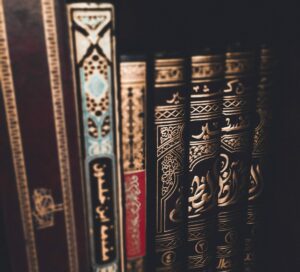 The way we are often taught history in the West is that there was the classical period proceeded by a fissure of nothingness and then a renaissance (rebirth) alongside a European scientific revolution. How does ʿAbd al-Laṭīf, perhaps not so dissimilar to other classical Arab polymaths, fit into the flow of history?
The way we are often taught history in the West is that there was the classical period proceeded by a fissure of nothingness and then a renaissance (rebirth) alongside a European scientific revolution. How does ʿAbd al-Laṭīf, perhaps not so dissimilar to other classical Arab polymaths, fit into the flow of history?
ʿAbd al-Laṭīf was part of a continuum that was never really cut off. Among his famous sayings is the one about knowledge passing from nation to nation, from generation to generation, and from land to land. He goes from talking about the pyramids to talking about the Torah, then looks at the Qur’an, and then turns to classical authors. And he sees himself as part of this continuum. You know, if you are going to be Eurocentric, yes, you might look back and think of there being a trough. But of course, there wasn’t as far as he was concerned. Aristotelian scholars went all the way through and had a very rich history. ʿAbd al-Laṭīf thought of himself not only as an Aristotelian but as a kind of primitive Aristotelian who wanted to strip away the Arabic accretions that had been made and get back to the original. So, you know, there’s no point in talking about the Renaissance or rebirth because it really never dies. There’s one of the most famous lines of Latin poetry by Lucretius which goes “like runners they pass on the torch of life.” And I think this is very much how ʿAbd al-Laṭīf saw himself: as a guard of ʿilm—these are the books that are revealed from God—as well as the guardian of all these different canons including the Greeks, the Romans, and the Arabs and those writing in Arabic. (more…)
A Physician on the Nile Lives Among the Dead: An Interview with Tim Mackintosh-Smith
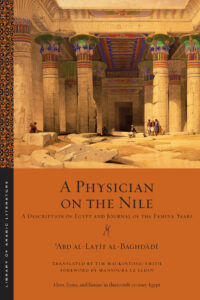 A Physician on the Nile begins as a description of everyday life in Egypt at the turn of the seventh/thirteenth century, before becoming a harrowing account of famine and pestilence. In this interview, the first of a two-part series, translator Tim Mackintosh-Smith sits down with A. J. Naddaff to discuss the essence of the book, his work as a translator and author, and his experience living in Sanaa, Yemen.
A Physician on the Nile begins as a description of everyday life in Egypt at the turn of the seventh/thirteenth century, before becoming a harrowing account of famine and pestilence. In this interview, the first of a two-part series, translator Tim Mackintosh-Smith sits down with A. J. Naddaff to discuss the essence of the book, his work as a translator and author, and his experience living in Sanaa, Yemen.
You’ve translated for a long time now, including a previous text titled Two Arabic Travel Books for LAL. Every translator of course remembers the first text they worked on. What was yours?
I’m taken back to Mr. Gillette’s Latin class circa 1971-72. I remember being given a Latin prose—these little paragraphs taken from Caesar that we had to translate into English. And I can remember absolutely loving that. As for Arabic, the first solid translation that came out was “City of Divine and Earthly Joys: The Description of Sanaa” in 2001. It is literally a description of Sanaa in the eighteenth century, a beautiful crystalline description of the city. That piece is still very much alive in my mind because Sanaa is really my home, and I am not there at the moment. (more…)
Cultivating the Principles of Sufism: A Spiritual Journey with ʿĀʾishah al-Bāʿūniyyah
A Guest Post by Aisha Subhan
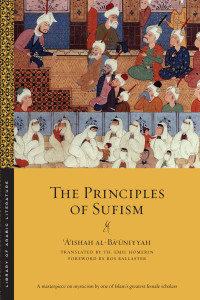 A few years ago when I began searching for a topic for my master’s thesis, I explored various subjects and figures in Sufism, as Sufism is my main scholarly (and non-scholarly!) interest. During my search, I stumbled across the works of ʿĀʾishah al-Bāʿūniyyah (d. 923/1517), a female Sufi of Damascus. Thanks to Emil Homerin (1955-2020), who worked tirelessly to provide beautiful and rich translations and a biography of ʿĀʾishah al-Bāʿūniyyah, we are left with a tremendous legacy. In reading these works, I delighted in A’ishah’s poetics of love, her basking in mystical joy, and her feminine version of divine union. Filling a void in my study of Sufism both academically and spiritually, ʿĀʾishah was the female voice and guide that I had been waiting for.
A few years ago when I began searching for a topic for my master’s thesis, I explored various subjects and figures in Sufism, as Sufism is my main scholarly (and non-scholarly!) interest. During my search, I stumbled across the works of ʿĀʾishah al-Bāʿūniyyah (d. 923/1517), a female Sufi of Damascus. Thanks to Emil Homerin (1955-2020), who worked tirelessly to provide beautiful and rich translations and a biography of ʿĀʾishah al-Bāʿūniyyah, we are left with a tremendous legacy. In reading these works, I delighted in A’ishah’s poetics of love, her basking in mystical joy, and her feminine version of divine union. Filling a void in my study of Sufism both academically and spiritually, ʿĀʾishah was the female voice and guide that I had been waiting for.
My journey with ʿĀʾishah al-Bāʿūniyyah began with her Principles of Sufism. Intended as a book for spiritual seekers, The Principles of Sufism provides selected quotations from various Sufis, Quranic verses, and Prophetic sayings along with some of ʿĀʾishah’s own divinely inspired writings. As a Sufi-oriented seeker myself, I welcomed the advice and guidance of ʿĀʾishah al-Bāʿūniyyah on my own spiritual path. My spiritual wayfaring and its process mirrored ʿĀʾishah’s core principles: repentance (tawbah), sincerity (ikhlāṣ), remembrance (dhikr), and love (maḥabbah). Through her presentation of these principles, ʿĀʾishah led me on a journey that evoked new reflections, epiphanies, and mystical experiences. (more…)
“What are the animals called in their country”: Science, disenchantment, and world travel in Ḥannā Diyāb’s Book of Travels
In this guest post, Matthew Chovanec explores how The Book of Travels by Ḥannā Diyāb, translated by Elias Muhanna, relates to modern world travel and disenchantment.
 Reading old travelogues would be more enjoyable if it wasn’t also a reminder of how thoroughly unenchanted travel has become in the modern world. What Ḥannā Diyāb describes as an epic, year-long journey across an entire continent in his account The Book of Travels can these days be done in four hours on a cheap flight from Paris to Beirut. Rather than hear the source material for some of the most famous tales in the Thousand and One Nights from a native informant as Antoine Galland did from Diyāb, now you can stream the new live-action Aladdin while sitting in economy class. And rather than risk the shipwrecks and lice and deadly winter storms that Diyāb endured on his trip to France, the most bodily harm you are likely to risk nowadays is a crick in the neck from trying to sleep on the plane.
Reading old travelogues would be more enjoyable if it wasn’t also a reminder of how thoroughly unenchanted travel has become in the modern world. What Ḥannā Diyāb describes as an epic, year-long journey across an entire continent in his account The Book of Travels can these days be done in four hours on a cheap flight from Paris to Beirut. Rather than hear the source material for some of the most famous tales in the Thousand and One Nights from a native informant as Antoine Galland did from Diyāb, now you can stream the new live-action Aladdin while sitting in economy class. And rather than risk the shipwrecks and lice and deadly winter storms that Diyāb endured on his trip to France, the most bodily harm you are likely to risk nowadays is a crick in the neck from trying to sleep on the plane.
One particular moment in Diyāb’s travelogue shows not only that the world has become unenchanted but also how he himself contributed to this change. Once he arrives in France, Diyāb is granted an audience with King Louis XIV. At the palace in Versailles, he and his travel companion Paul Lucas present a number of curios to the court, including a strange looking rodent with large ears never before seen in Europe. (more…)
[PAUSED] Call for Pitches: Library of Arabic Literature Blog

This call for pitches is currently paused. We will announce when submissions have reopened–stay tuned!
We’re looking for writers who are enthusiastic about Arabic literature to contribute to the Library of Arabic Literature blog. We welcome ideas for posts on a variety of topics. Previous blog posts have included reflections on how LAL books fit with a broader theme, such as the Global Middle Ages or disability studies, as well as surprising comparisons (e.g. ‘Antarah and Cardi B). Blog posts should be 800-1200 words long, written in English, and must feature at least one LAL book, preferably (but not necessarily) one published within the last two years. We offer an honorarium of $400 for each post.
Please email your pitch and a short bio to [], and include the phrase “LAL Blog Pitch” in the subject line of your email. Pitches will be considered on a rolling basis.
